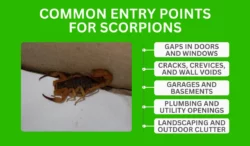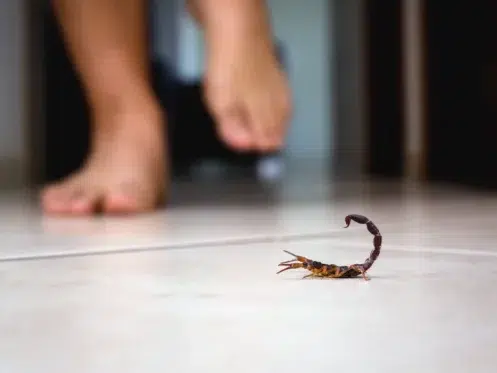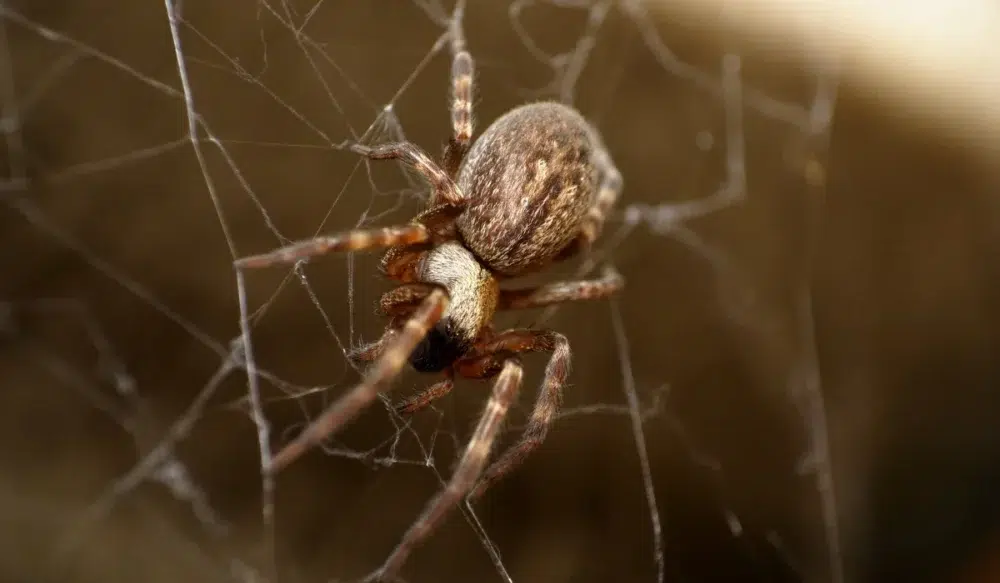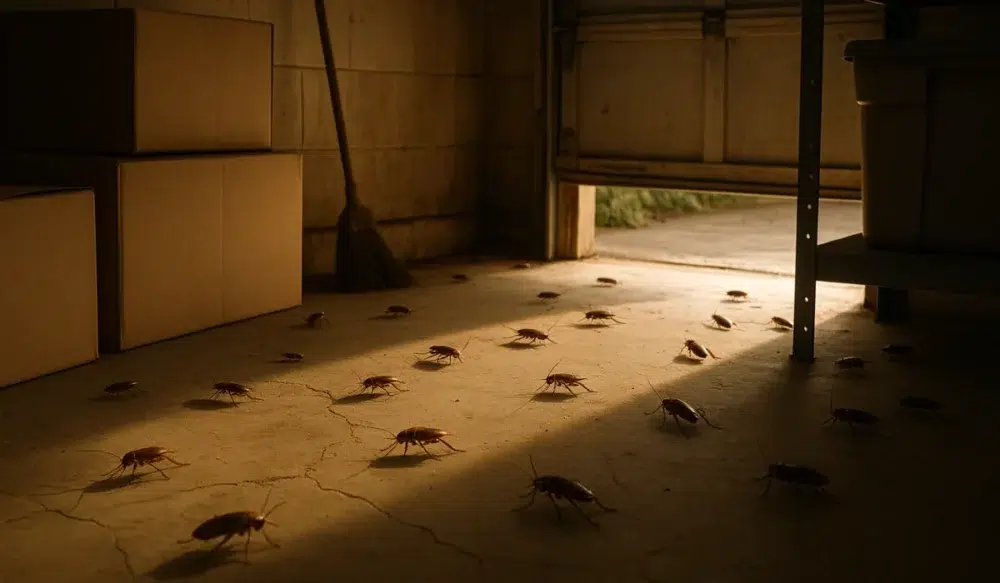Scorpions are a common pest control concern for homeowners in Arizona, particularly in cities like Phoenix and Mesa. These arachnids are highly adaptable and can enter your house through tiny crevices, cracks, and open doors. If you’ve spotted one inside, you may be dealing with a scorpion infestation.
So, do scorpions actively seek out homes? Not necessarily, but certain factors can draw them in.
Let’s break down how scorpions get inside, what attracts them, and how professional pest control can help you get rid of scorpions for good.
Key Takeaways
- Small gaps in doors, windows, walls, and utility openings allow scorpions to enter homes in search of shelter.
- Garages, basements, wall voids, and outdoor clutter provide scorpions with hiding spots and attract insects they feed on.
- Sealing gaps, fixing leaks, reducing clutter, and using pest control services help prevent scorpions from getting inside homes.
- The Arizona bark scorpion is the most venomous species in North America and requires professional removal if found indoors.
Common Entry Points for Scorpions

Scorpions can squeeze through openings as small as a credit card’s thickness. They typically enter homes for three reasons—shelter, food, and moisture.
Here’s how they get inside with these entry points:
1. Gaps in Doors and Windows
Without door sweeps or weather stripping, scorpions can crawl under doors and window frames.
Worn-out seals are an open invitation for these critters looking for relief from extreme temperatures. The Southwest has scorching summers and cool nights, pushing scorpions indoors in search of stable conditions.
2. Cracks, Crevices, and Wall Voids
Scorpions hide in crevices along foundations and walls, making their way inside through small openings.
They also use wall voids and attic spaces to travel undetected, often seeking out closets, crawl spaces, and basements where they can remain hidden.
3. Garages and Basements
Garages often have gaps around doors and windows that provide easy access. Basements and crawl spaces are dark and humid—ideal hiding spots for scorpions looking for moisture.
They are particularly drawn to damp areas in homes, such as bathrooms, kitchens, and laundry rooms.
4. Plumbing and Utility Openings
Scorpions can climb pipes and enter homes through drains.
These openings also provide access to their food sources, such as crickets, cockroaches, roaches, and wasps. If you have an infestation of these insects, scorpions will follow.
5. Landscaping and Outdoor Clutter
Overgrown landscaping, wood piles, and clutter near the home create hiding spots close to entry points.
These areas attract insects, which serve as a food source for scorpions, increasing the likelihood of them venturing indoors.
How to Prevent Scorpions from Getting Inside
If you’re dealing with a scorpion problem, these preventative measures can help:
- Use caulk to close cracks in foundations, walls, and crevices around windows.
- Install weather stripping and door sweeps to eliminate gaps under doors.
- Schedule regular pest control services to eliminate crickets, cockroaches, and roaches.
- Keep food sealed and avoid leaving pet food out overnight.
- Fix leaks and remove standing water in crawl spaces, basements, and under sinks.
- Keep wood piles at least 20 feet away from your home.
- Trim landscaping to reduce hiding spots near your home’s foundation.
- Place sticky traps along baseboards and entryways to catch scorpions.
- Use a black light at night to spot scorpions—most species of scorpions glow under UV light.
If scorpions keep getting inside despite these DIY measures, a professional can apply scorpion control treatments around your home’s perimeter.
Beware of the Arizona Bark Scorpion
The Arizona bark scorpion is the most venomous species of scorpion in North America. Its stinger can cause scorpion stings that result in pain, numbness, and difficulty breathing in some individuals.
If you find one, avoid handling it and call a pest control company immediately.
At Green Home Pest Control, our exterminators know how unsettling it can be to find any type of scorpion in your home. Whether you’re dealing with an occasional sighting or a full scorpion infestation, we’re here to help.
Don’t wait for the problem to get worse. Call us today and take the first step toward a scorpion-free home!




